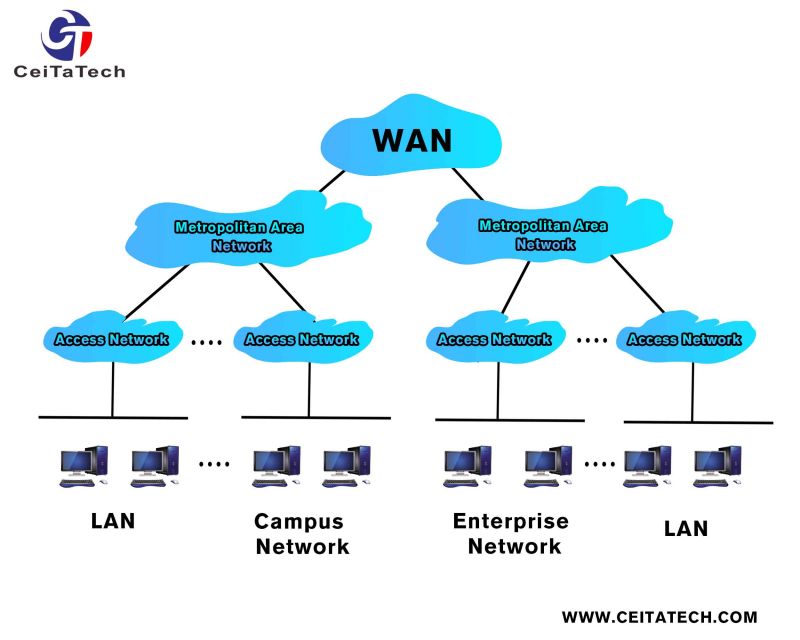Local Area Network (LAN)
It refers to a computer group composed of multiple computers interconnected in a certain area. Generally, it is within a few thousand meters in diameter. LAN can realize file management, application software sharing, printing
Features include machine sharing, scheduling within work groups, email and fax communication services, and more. The local area network is closed and can be composed of two computers in the office.
It can consist of thousands of computers within a company.
Wide Area Network (WAN)
It is a collection of computer networks that spans a large, regional area. Usually across provinces, cities, or even a country. A wide area network includes subnets of different sizes. Subnets can
It can be a local area network or a small wide area network.

The difference between local area network and wide area network
A local area network is within a certain area, while a wide area network spans a larger area. So how to define this area? For example, the head office of a large company is located in Beijing.
Beijing, and branches are spread all over the country. If the company connects all branches together through the network, then a branch is a local area network, and the entire headquarters
The company network is a wide area network.
What is the difference between the WAN port and the LAN port of the router?
Today's broadband router is actually an integrated structure of routing + switch. We can think of it as two devices.
WAN: Used to connect to external IP addresses, usually refers to the egress, and forward IP data packets from the internal LAN interface.
LAN: Used to connect to the internal IP address. Inside the LAN is a switch. We can not connect to the WAN port and use the router as an ordinary switch.
Wireless LAN (WLAN)
WLAN uses electromagnetic waves to send and receive data over the air without the need for cable media. The data transmission rate of WLAN can now reach 11Mbps, and the transmission distance is
It is more than 20km away. As an alternative or extension of traditional wiring networks, wireless LAN frees individuals from their desks and allows them to work at any time
Accessing information anywhere improves employees’ office efficiency.
WLAN communicates using the ISM (Industrial, Scientific, Medical) radio broadcast band. The 802.11a standard for WLAN uses the 5 GHz frequency band and supports the most
The maximum speed is 54 Mbps, while the 802.11b and 802.11g standards use the 2.4 GHz band and support speeds of up to 11 Mbps and 54 Mbps respectively.
So what is the WIFI we usually use to access the Internet?
WIFI is a protocol for implementing wireless networking (actually a handshake protocol), and WIFI is a standard for WLAN. WIFI network works in the 2.4G or 5G frequency band. Other
External 3G/4G is also a wireless network, but the protocols are different and the cost is very high!
Virtual Local Area Network (VLAN)
Virtual LAN (VLAN) refers to a network technology that allows sites in the network to be flexibly divided into different logical subnets according to needs, regardless of their physical location.
For example, users on different floors or in different departments can join different virtual LANs as needed: the first floor is divided into the 10.221.1.0 network segment, and the second floor is divided into
10.221.2.0 network segment, etc.
Post time: Mar-19-2024








